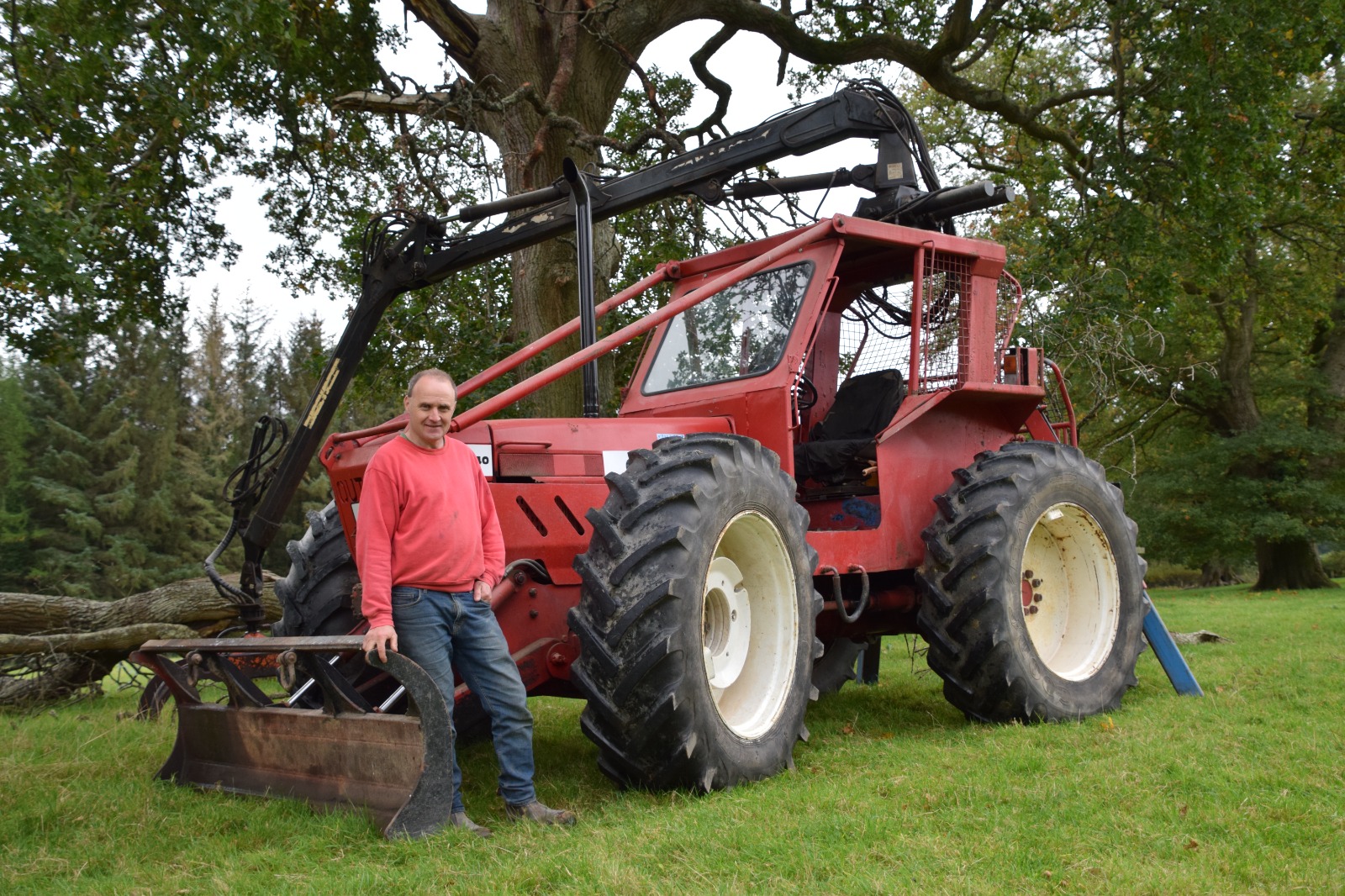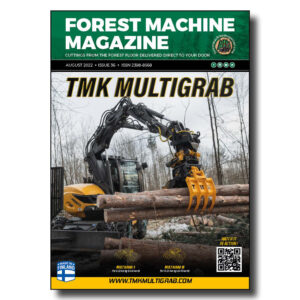FMM uncovers the story of last ever County Tractor built and converted for Forestry Use
Every time I hear someone talking about County Tractors or see photos of them my heart-rate starts to increase. I have previously owned and used three of them myself, a 754, 1004, and an 1164 and I regret to this day parting with them.
The County Tractors always remind me of when we had big cutting squads, skidders extracting full-length trees and cross-cutting gangs cutting and stacking the timber at roadside. My early years were with the Forestry Commission (FC) using 754 County Falstone skidders and later the larger 1164 County Cheviot skidders. The engineering division of the Forestry Commissions converted them for forestry use. This takes me back to happy times where although it was challenging work there was a lot of fun and frolics at break times.
There were not as many contractors in the late nineteen seventies and early eighties as the harvesting work was conducted by the FC’s own squads with contractors working on standing sales for sawmills and timber merchants.
Adapted County’s, Roadless and Fordson Major’s were a common sight for extracting timber in forests around the UK, occasionally you would stumble across a Timberjack or Muirhill tractor, but these were exceedingly rare.
At the onset of the short wood felling systems in the 1980’s purpose-built forwarders started to appear in UK forests. The private forestry sector started to increase in size as more timber parcels came to market, the FC, reduced the size of their harvesting squads and started employing contractors on direct contracts to conduct the work. Purpose built forwarders were still in their infancy and were expensive with little mechanical back up available. Countys were still very much in demand as converting them to a forwarder using a trailer with a crane required few alterations to the skidder base. This was an affordable choice for contractors with the County being a versatile tool that could altered from a skidder to a forwarder in less than an hour.
There were companies offering purpose-built County tractors converted specifically for forestry use and one of these was James Jones and Sons Engineering Division at Larbert. The engineering division changed the roof to accept the Highland Bear (Cranab) roof crane with further modifications including the addition of a front blade, forestry guarding, and a forwarder trailer. This became the famous “Highlander” forestry tractor which was a popular forestry tractor not just in the UK but worldwide.
County Tractor History
County tractors first went into production in 1948, with the popular and distinctive four equal wheeled units manufactured in 1961. These models were based on a Fordson Supermajor but badged the Super Four.
The drive to the front wheels was via twin shafts which allowed the standard differential to work on all four wheels. In 1962 a 6-cylinder tractor was introduced and badged the Super Six, production continuing with a restyle to the bonnet and radiator grill in 1963 and then manufacture ceased in 1965. It used the Ford 590 engine and produced 95bhp. These first County tractors soon built a reputation for their unrivalled traction and stability, with many farmers buying them specifically for hillside work.
-
That’s a remarkable amount of work hours for a single machine, the Norcar 600 owned by Erkki Rinne is taken well care of, it even has the original Diesel engine.
-
Kieran Anders is a forestry contractor working in the lake district. His work involves hand cutting and extracting timber using a skidder and tractor-trailer forwarder.
-
It is not possible to eliminate chain shot, but there are simple steps that can be taken to reduce the risk.
-
Arwel takes great pride in the fact that the mill has no waste whatsoever, “the peelings are used for children’s playgrounds, gardens and for farm animals in barns in the winter and the sawdust has multiple uses in gardens and farms as well.
-
Timber hauliers need to encourage young blood in, and also look after the hauliers we have, we need make the sector a safe and positive place to work.
FIND US ON
The second generation of County tractors were introduced in November 1964. The 4-cylinder model was given the 654 badges, which was replaced by the 754 (based on the Ford 5000) in May 1968. The 6-cylinder version introduced in March 1965 was the 954 which produced 95bhp using the Ford 2703E engine until the tractor was replaced by the uprated 1004. July 1967 saw the flagship 1124 introduced and developed 113bhp from the Ford 2714E engine. This engine had an unstressed block, so County
had to fit their own sumps to give extra structural support to the engine. The last 1124’s rolled off the production line in July 1971 and were replaced by the 1164.
Latterly County produced the 974, which was based on the Ford 7610, the 1164, 1174 and 1184 which was launched in 1979. The 1184 was built around a TW10 at 120bhp from the Ford 401S engine and had a weight distribution of 3.5 tonnes on the front axle and 2 tonnes on the rear axle. The 1454 weighed 7 tonnes and produced 145bhp from the turbocharged version of the engine fitted to the 1184. In 1978 the 1454 was superseded by the 1474 (based on the Ford 9700) which was given a longer wheelbase and 149bhp, before been uprated to 153bhp when the base unit was changed to the TW20.
The final model introduced by County was the 1884. The Ford 401S engine was turbocharged and intercooled to develop 188bhp.
The Benson Group in Knighton, Powys bought County for £3.2 million and continued making County tractors up until 1990. The group made around 150 tractors. Manufacturing the County’s went well but the Benson Group struggled to obtain suitable safety cabins which would conform to UK and EU regulations. This proved to be a step too far with 56 County tractors incomplete. The company were reduced to selling spare parts and converting Ford Transits into four-wheel drive vehicles before selling the County name to South Essex Motors (SEM).
SEM and its engineering director Eric May changed the County twin driveshaft four-wheel drive system for use on Ford New Holland series 40 tractors. The idea was to move the dual prop shafts closer to or even beneath the centreline of the tractor which would increase the steering angles. Eight skid units were bought from Ford New Holland to complete an order for eight equal wheel drive tractors due for delivery the following February. With Ford New Holland used as the tractor base, SEM could use the UK/EU approved Q Cab. Before completion, the receivers were called in at SEM, plunging the job into jeopardy. Luckily, it was saved by the Benson Group, who stepped in and completed the order in May 1995. By then the order had increased to ten tractors, seven 754-40’s without cabs which were destined for Canada, two 1184-40’s with cabs to the Falkland Islands and finally one 1164-40 without a cab to St Helena.


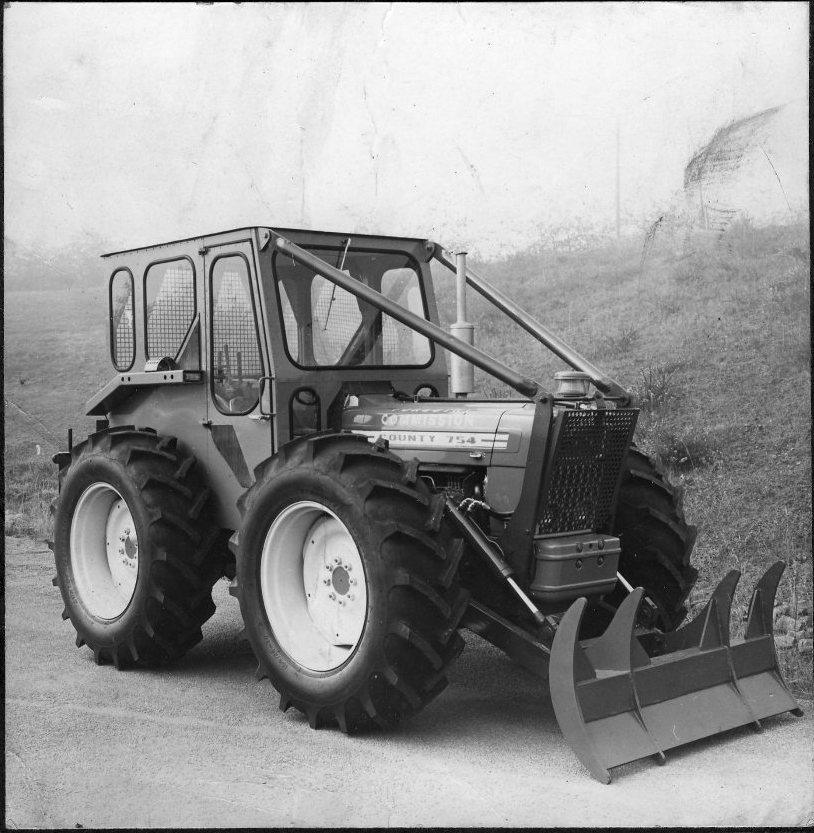
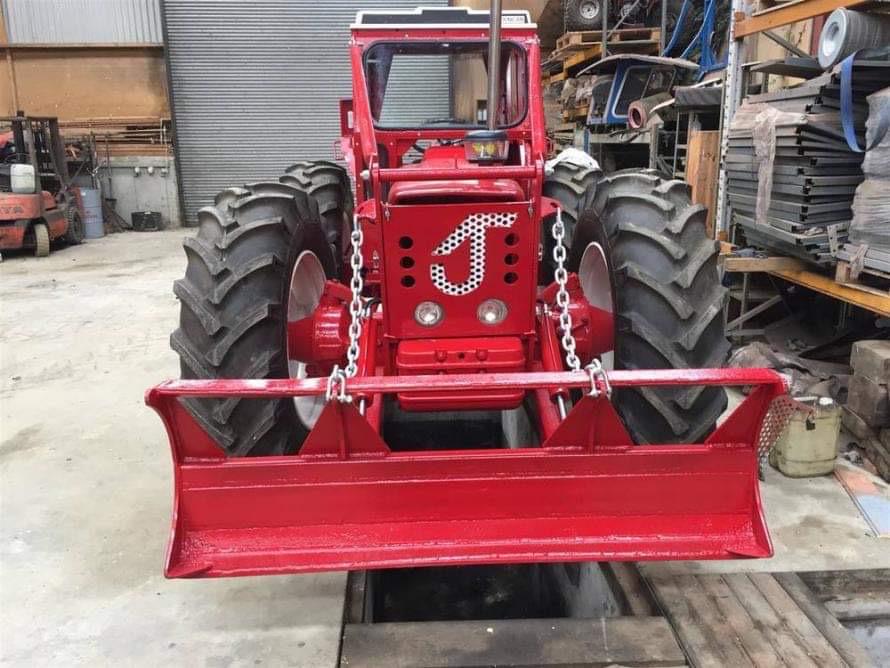
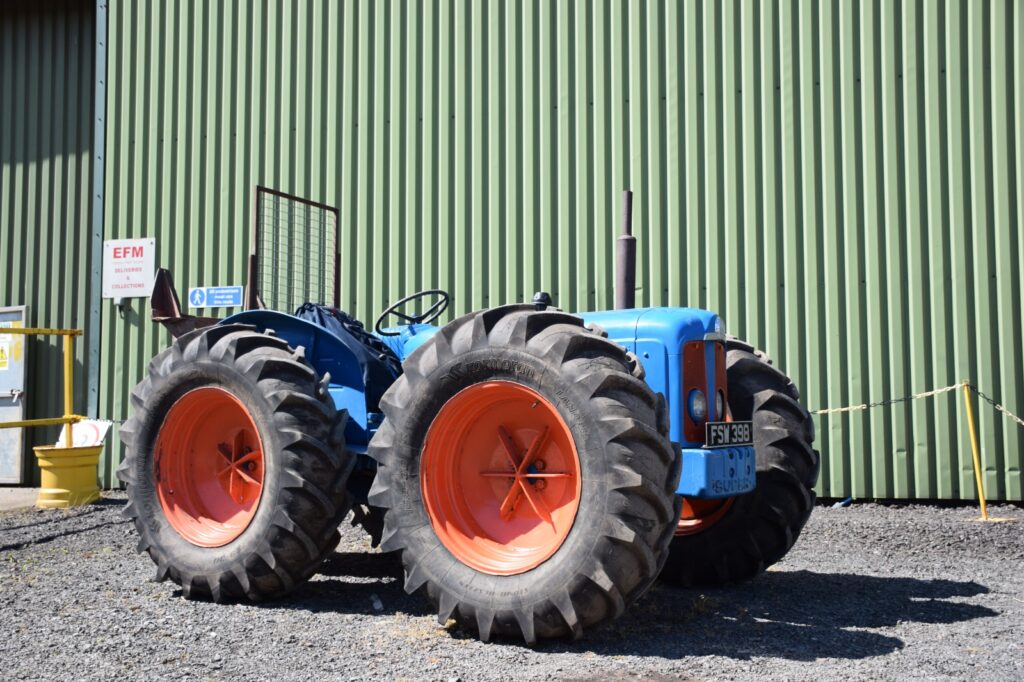
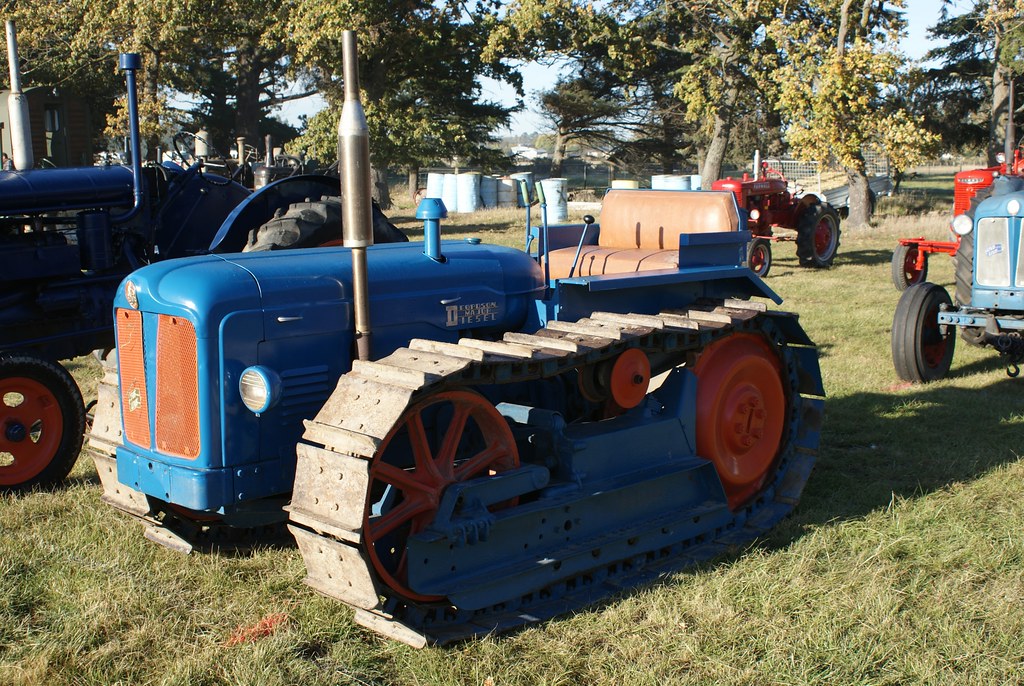
The 1164-40 was the last ever County tractor built. It was commissioned at the request of the British Overseas Territory Island of St Helena for its Environment and Natural Resources Directorate (ENRD) which needed the tractor for forestry use. The 1164-60 was to replace a 754 Highland Bear County and a smaller 4600-four County.
The County was first shipped from Knighton, Powys to Outreach in Larbert, Stirlingshire – now Palfinger UK which is part of the TH White Group. Outreach was formerly the James Jones & Sons Engineering Division prior to a management buyout in 1990. Outreach designed a forestry conversion kit for the 40 series tractors in the belief that more would follow. A Roll Over Protection Structure (ROPS) cab was designed along with an integrated steel frame to support the Farmi telescopic timber crane. Igland 5000 pto driven remote controlled double drum winches, hydraulic stabilising legs, front logging blade, an auxiliary hydraulic pump for running the crane, forestry guarding and a Farmi forwarder trailer were all added to complete the conversion.
Once the conversion was completed and re-sprayed in the Highlander red colours the County was shipped to St Helena which became its home for the next 23 years.
1164-40 County
I posted a photo of a County tractor on my Facebook page one evening and one of the comments was from farmer Brychan Anwyl, a County enthusiast from Mid Wales.

Brychan has been a County enthusiast since the age of seven when he first saw an IH 634 all wheel drive with a County conversion. This led to a lifelong fascination. After reading an article in a farming magazine in 1994 about the ten Ford New Holland 40 series tractors with the County conversions, Brychan hoped that one day he would be able to find one that he could buy.
We started a conversation which progressed to a phone call, during which I discovered that Brychan owned the very last County to be built, the 1164-40 series model. After chatting I soon realised that this County had a remarkably interesting history which was worthy of further investigation. I arranged a time to call in and see Brychan and the County at his farm in Llanbrynmair and I was excited at the prospect of discovering the history of this extraordinary tractor.
Brychan followed the return of one of the 1184-40 series County’s which had returned to the UK from the Falkland Islands and went to see it when it came up for auction in 2010 at Cheffins Vintage Tractor Sale in Cambridge. He discovered the other 1184-40 had been seriously damaged in a fire and had been buried in the Falkland Islands. This made him more determined to find out the fate of the remaining 1164-40 County.
In 2016 he discovered a St Helena forum on the internet which eventually put him in touch with Bruce Salt. Bruce had worked on St Helena as a presenter on a local radio station and was the islands foremost Land-Rover enthusiast.
Brychan asked Bruce about the tractors that were on St Helena so Bruce sent Brychan photographs of a Ford 6610 and a County 4600 Four. Brychan asked if there were any other Counties and explained about the 1164-40 with the forestry conversion to which Bruce replied, “Oh you mean the red one.”
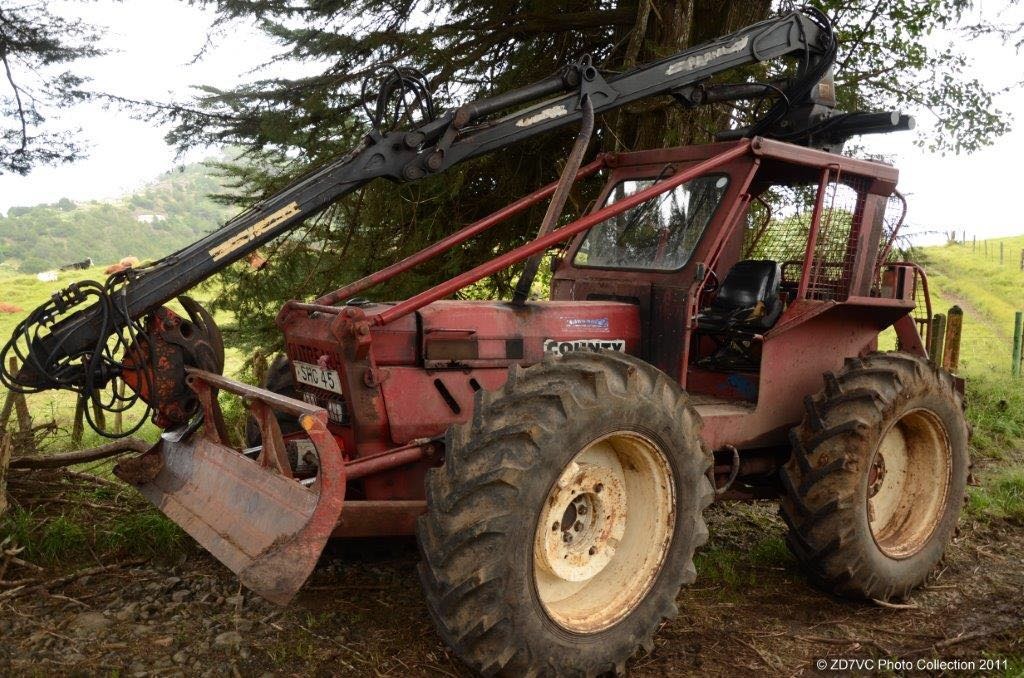
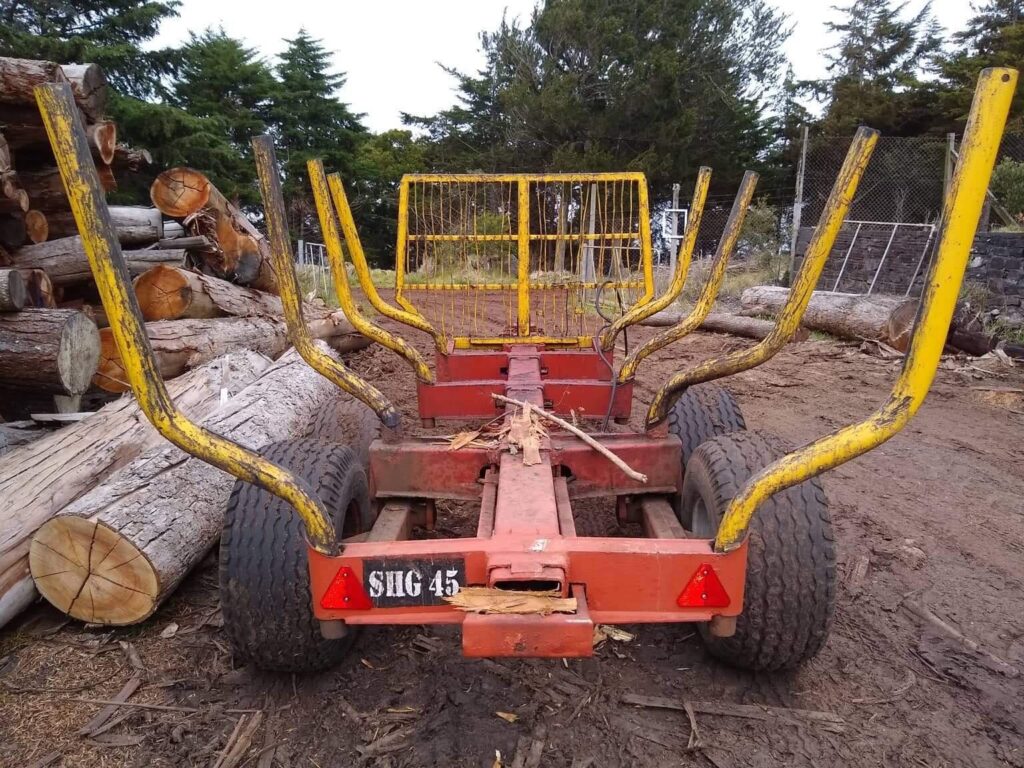
Brychan was delighted to find out that the County was in good working order and still owned by the ENRD in St Helena. Shortly after this discovery Bruce found out that the County was due to be sold off and emailed Brychan to let him know. Unfortunately, Brychan didn’t realise he had a problem with his email account and the messages from Bruce did not arrive until it was too late. The St Helena Government sought tenders from potential purchasers and Brychan only received the messages from Bruce after the County had been sold. He was devastated and believed he had lost his only chance of owning this rare piece of History.
Brychan’s close friend and neighbour, Sarah Moody, encouraged him to continue his search and find the new owner. The County had been bought by Nicholas Thomas from the company NT Powertechs. His intention was for the County 1164-40 to work on a contract alongside his other Highlander County. After speaking to Brychan, Thomas agreed to sell the machine once his contract was completed. It was to be a further twelve months, with a great deal of haggling, before a deal could be reached on the price. Once settled Thomas agreed to partially dismantle the County so it could be packed into a 20ft shipping container and sent back to the UK.
Back in the UK
The sale was just for the County, as the Farmi trailer previously used with it, is still in St Helena and working to this day.
Brychan purchased the County on the 10th of November 2017, it was dismantled, packed and shipped on the 22nd of February 2018. Severe weather delayed sailing and it arrived at its first port of call, Cape Town on the 5th of April. It was then transferred onto MSC Altimira and arrived at London’s gateway docks a month later. After clearing customs on the 16th of May it was finally delivered to Llanbrynmair by a container lorry. Brychan’s brother Gerwyn travelled over from his home in Manchester to help. Un-packing and reassembling the County was a real family affair, cousins Hywel and Glyn Evans and Brychan’s uncle Eirian were there to aid Brychan and Gerwyn.
Once all back together judging the overall health of the County was the next step. They found that the engine was in good working order so went ahead with the removal of the cab floor and other guarding to pressure wash and check for any oil leaks.
Years of working in a hot salty climate had taken its toll, most of the hydraulic hoses needed replacing as they had hardened and cracked and almost every hydraulic ram needed new seals. Gerwyn, a motor sport contractor, replaced the wiring loom which had become hard and brittle while Brychan repaired the hydraulics. There were other areas requiring attention; the winch rollers needed freeing, a new winch cable was essential, the throttle pedal wanted repairing, the axle hub stops required adjusting and the driveshaft hubs needed new seals.
Visit
I was thrilled about my upcoming visit to see this famous County, my sleep pattern the night before could be easily described as like that of a young child’s the night before Santa arrives. ☺
As we drove up the farm entrance, I saw the County, which was just beyond the farmhouse. Brychan was there to greet me, and once formalities were out of the way I had the opportunity to have a good look around. At first glance it looked similar to a Highlander, but I soon realised that this County had a lot of differences. There was a longer distance between the front and rear wheels. On the models I had they were normally close together with little room to enter and exit the cab, this County had a much longer wheelbase.
Gone was the clumsy front axle set up and logging blade assembly of earlier County models, this machine looked neat and uncluttered with weighted front wheels for extra stability. The rear of the tractor had been cleverly designed to incorporate the angled stability legs and double drum Igland winch without becoming cumbersome with strong mesh guarding instead of a rear window.
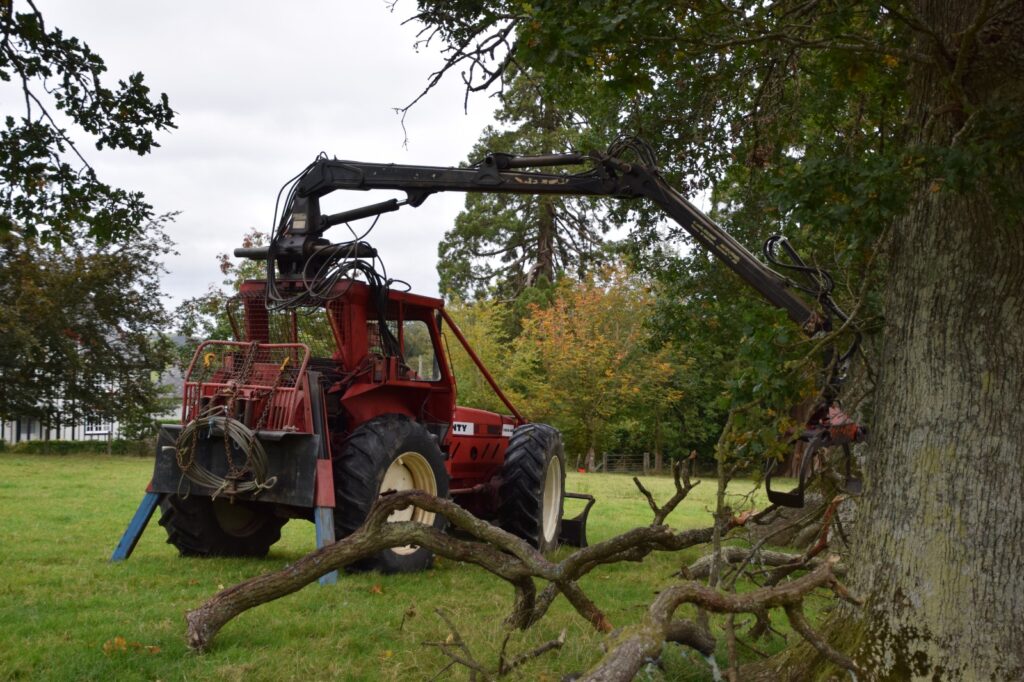
It had a flat floor inside the cab without the gear turrets found in earlier models, this made it easy to rotate the operators’ seat through 90°so you were facing backwards when using the crane. The crane controls were found on the left-hand side of the cab when facing backwards, vision out of the County while using the crane was superb.
Facing forwards there was the rev counter, fuel gauge and temperature gauge on the dashboard. A hydraulic lever to the side raised and lowered the logging blade and the battery was clamped securely on the front of the tractor just inside the cab. With all the extras including guarding, crane, winches and stabilisers the County weighs 8 tonne. There was ample leg room in the cab with a reasonably comfortable seat, much better than any I have previously sat on.
There was a large tree nearby with limbs that had broken off in a recent storm which needed tidying, so Brychan offered to show us the County working. It sounded magnificent once started. The crane was then secured for travelling with the grapple gripping the front blade. The 1164-40 was no slouch as we drove to the field where the large fallen limb was. Brychan positioned it next to the wood, lowered the stabilising jacks and front blade. The County hardly moved with the crane running and with the stabilisers down you could reach out at 90° with the dipper fully extended without worrying about the tractor lifting or tipping over.
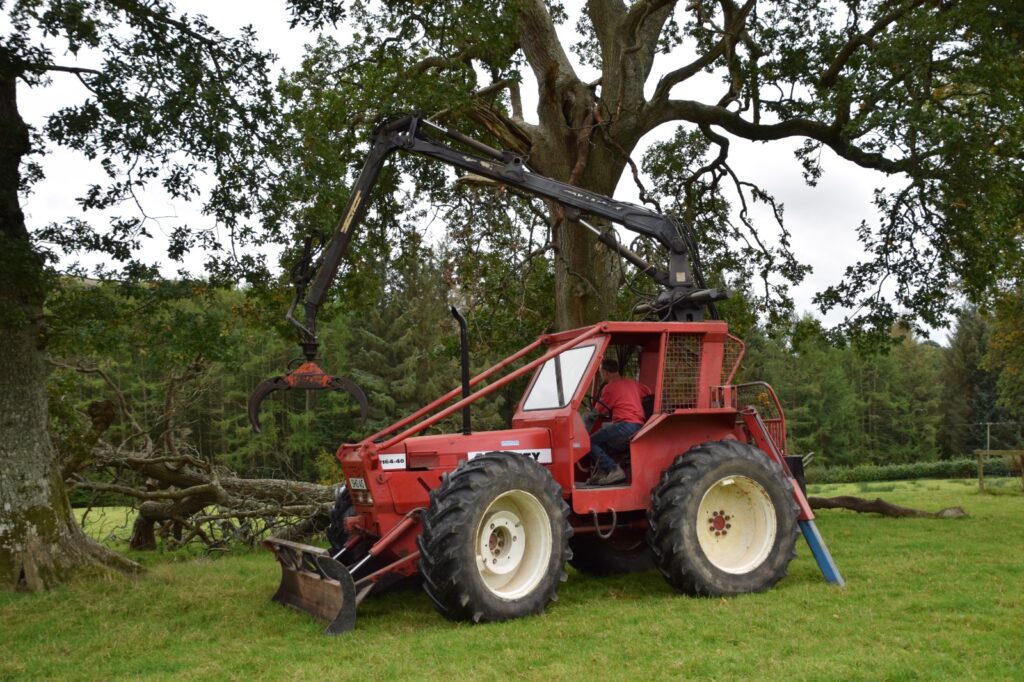
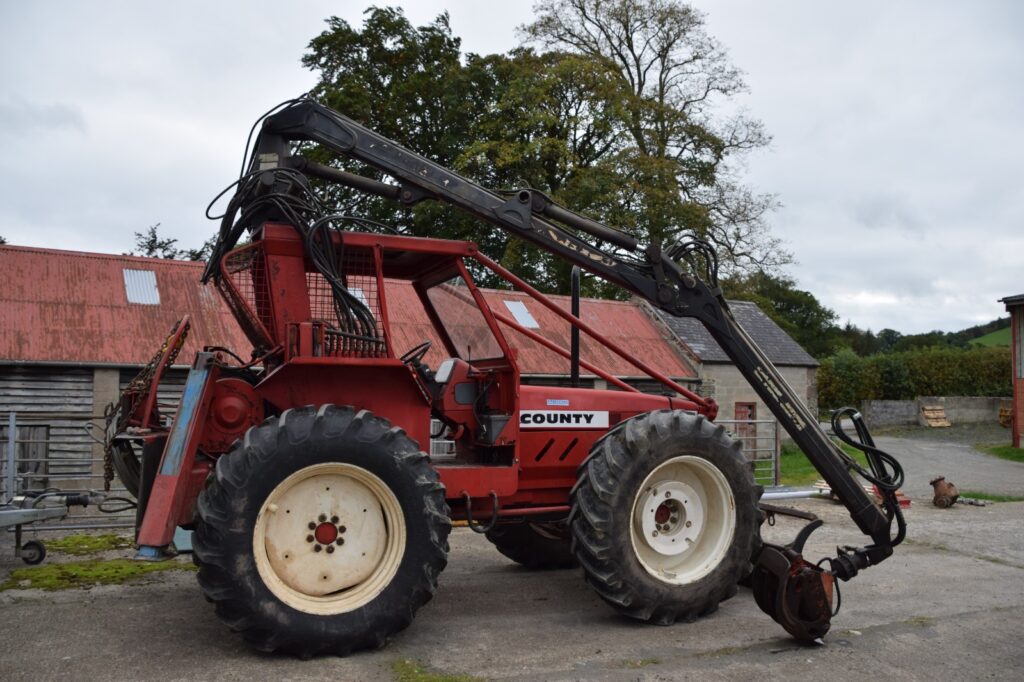
The crane was fast and precise with excellent slewing power and reach.
I watched Brychan clear up the fallen limb and was elated at seeing this County at work but sad at the same time as I knew my visit was ending. I felt relieved that it was someone like Brychan who owned this important part of history. Not only is he incredibly proud to own the County, he enjoys displaying it at shows and tractor events throughout the UK. This gives other County tractor enthusiasts the opportunity to be able to see and find out about its history from Brychan himself. My only disappointment was that the security on the farm was good, and I didn’t have a trailer big enough to steal the County with me!
Forest Machine Magazine is written and edited by a forest professional with over 40 years hands on experience. We are dedicated to keeping you informed with all the latest news, views and reviews from our industry.
To support us you can subscribe to our bi-monthly magazine which is delivered to your door from only £30 per year.
Subscribe here
#homeoflogging #writtenbyloggersforloggers #loggingallovertheworld
-
 Issue 36£6.00
Issue 36£6.00

